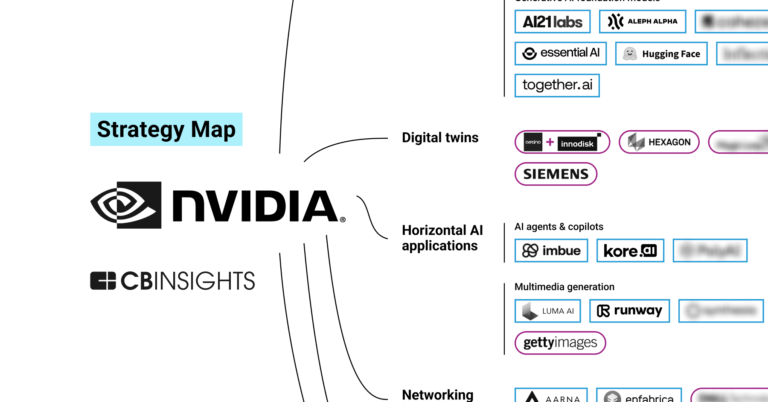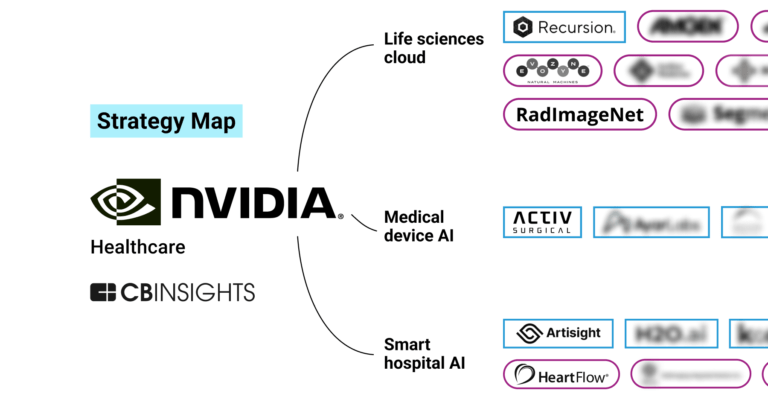
Ayar Labs
Founded Year
2015Stage
Series D | AliveTotal Raised
$374.72MValuation
$0000Last Raised
$155M | 1 yr agoMosaic Score The Mosaic Score is an algorithm that measures the overall financial health and market potential of private companies.
+146 points in the past 30 days
About Ayar Labs
Ayar Labs focuses on optical Input/Output solutions within the technology sector. The company offers products that facilitate data movement and improve compute efficiency for artificial intelligence (AI) systems, while also addressing costs, latency, and power consumption. Ayar Labs primarily serves the AI infrastructure industry and provides solutions for AI training and inference processes. Ayar Labs was formerly known as OptiBit. It was founded in 2015 and is based in San Jose, California.
Loading...
Ayar Labs's Products & Differentiators
Ayar Labs Optical I/O solution
Ayar Labs in-package optical I/O solution combines a TeraPHY™ electro-optical chiplet and a SuperNova™ remote light source, delivering 8 x256G optical ports and achieving up to 2.048 Tbps full-duplex (4.096 Tbps total) throughput
Loading...
Research containing Ayar Labs
Get data-driven expert analysis from the CB Insights Intelligence Unit.
CB Insights Intelligence Analysts have mentioned Ayar Labs in 2 CB Insights research briefs, most recently on Jun 20, 2024.

Expert Collections containing Ayar Labs
Expert Collections are analyst-curated lists that highlight the companies you need to know in the most important technology spaces.
Ayar Labs is included in 4 Expert Collections, including Unicorns- Billion Dollar Startups.
Unicorns- Billion Dollar Startups
1,309 items
Game Changers 2018
36 items
Our selected startups are high-momentum companies pioneering technology with the potential to transform society and economies for the better.
Semiconductors, Chips, and Advanced Electronics
7,494 items
Companies in the semiconductors & HPC space, including integrated device manufacturers (IDMs), fabless firms, semiconductor production equipment manufacturers, electronic design automation (EDA), advanced semiconductor material companies, and more
Artificial Intelligence (AI)
20,894 items
Ayar Labs Patents
Ayar Labs has filed 101 patents.
The 3 most popular patent topics include:
- photonics
- fiber optics
- optical devices

Application Date | Grant Date | Title | Related Topics | Status |
|---|---|---|---|---|
12/31/2021 | 4/1/2025 | Optical devices, Prisms, Nonlinear optics, Light, Spectroscopy | Grant |
Application Date | 12/31/2021 |
|---|---|
Grant Date | 4/1/2025 |
Title | |
Related Topics | Optical devices, Prisms, Nonlinear optics, Light, Spectroscopy |
Status | Grant |
Latest Ayar Labs News
Nov 10, 2025
几乎没热 : 波导 里没有 电阻 电容 那套焦耳热,通道级能耗很低(注意,是通道,不是系统)。 时延极低 :光速加成,尤其适合超低时延互连/推理链路。 翻译成人话:做“搬运”和“加权求和”类的密集操作,光子像开了挂;但要当全能选手,还早。 2)为什么现在你买不到“光子计算芯片”? 工程大Boss:两座“转换大山” 光↔电(OE/EO)转换 模↔数( ADC /DAC)转换 真正烧功耗的往往不是“光算”,而是 这些转换环节 ,系统里能吃掉 大半的能耗 。 产业界的务实选择: 先把“光互联”做强做满 (NVLink的光版、Intel Optical I/O、Ayar Labs 这类 ),先不做“光计算”核心。 因为今天把芯片间/板间的电连线换成 光纤 , 账能算得过 ;把矩阵乘法全丢给光, 账常常算不过 。 3)那光子计算的“坑”都在哪? 坑A: 面积太大 光器件要“喂光”才耦合得进去,尺寸很难无脑缩; 微环 谐振器 做到 ~10 μm 左右已经逼近极限,再小耦合就崩。 端侧/可穿戴不友好 :你不会给手环塞个 5 cm × 5 cm 的芯片。 但 在 数据中心 /HPC: 大 die 不是原罪 。甚至可以玩 wafer-scale (整片 晶圆 上阵),工艺节点也不用卷 7 nm, 150 nm 级 就能跑。 Possi ble 路线: 光子晶体 、超表面、薄膜铌酸锂 等新型器件,把“有效尺寸”再往纳米量级推。 坑B: 可重构性与通用性 纯衍射“全光计算”(比如固定光掩模做卷积) 能效爆表但难以重构 ,换任务要换“mask”。 做成“通用图灵机”意义上, 光+电混合 是现实解: 可编程 、可更新、可上量产配套。 坑C: 配套电路复杂 你绕不开一圈外围:DAC/ADC、驱动、探测、时钟、温稳、校准…… 项目管理翻译: BOM 胖、版图大、 良率 风险高、测试门槛高 。 4)“全光计算”要不要上? 学术爽点 :傅里叶、卷积、矩阵乘法等能“光学一次性做完”。 产品现实 : 重构难、任务窄 ,一换任务就要换结构;相比之下,存内计算(电子)在小模型推理上又快又可编程。 结论: 做特定算法的“光加速器”可以;做通用 CPU /GPU的替身,不现实 (目前)。 5)可落地/可期待的方向(按“可做程度”排个序) 光互联优先(Now) 芯片内/芯片间/机柜间的 高速低功耗链路 ,最有ROI。 KPI 关注: 带宽密度(Tbps/mm)、能效(pJ/bit)、BER、插损预算、耦合良率 。 “少转换”的光子计算(Next) 目标: 减少 OE/EO + ADC/DAC 次数 ,把“算”尽量放在光域里做完、一次性读出。 典型器件: MZI(马赫-曾德尔阵列) 、微环谐振器(MRR)做矩阵运算。 光子存内计算 / 相变材料(PCM) (Next-Plus) 用相变材料当“可调电/光学权重”,做 类模拟矩阵乘 。 风险点: 耐久度、器件偏差、写入一致性、温漂 。 适配场景: 推理为主、低精度友好 的模型块(如注意力/全连接)。 光学蓄水池(Reservoir)计算 (Exploring) 很前沿,偏黑箱;适合 时序/信号处理 。 产品不确定性高, 先做PoC 别一上来排期。 光子 cache/register(延迟环) (Exploring) 用 延迟环 暂存数据,做流水/调度。 难点在 系统级调度与时钟对齐 ,工程复杂度爆表。 算存融合(Compute-in-Memory with Photonics) (Moonshot) MZI/MRR + 其他存储体融合, 潜在收益大,工艺复杂度更大 。 6)什么时候应该用光子?给你一个产品级“决策表” 需求场景 光互联 光子计算 芯片/板/机柜之间超大带宽(> Tbps) ✅ 立刻上 ❌ 不必 超低时延链路 ✅ 高性价比 ⚠️ 仅特定算子 数据中心/HPC(面积不敏感) ✅ ⚠️ 试点特定算子(如矩阵乘) 端侧/可穿戴(面积/成本敏感) ⚠️ 极少数高速接口 ❌ 基本不考虑 特定固定算子(卷积/矩阵)且低重构需求 ⚠️ ✅ 作为 加速器 通用可编程计算 ❌ ❌ 还是交给CPU/GPU/ASIC 7)做产品要盯的 KPI/风控点 系统能效 :别只看“光路”pJ/OP,要 把 OE/EO + ADC/DAC 算进去 。 带宽密度 & 耦合效率 :fibre-to-chip / chip-to-chip 的耦合良率、 封装 良率。 可重构规模 :权重更新速度、可编程维度(多少×多少的矩阵)、精度(比特数)。 温度与漂移 :谐振器热漂补偿成本(功耗+控制复杂度)。 良率 & 测试 :大面积/wafer-scale 的工艺波动、量产测试时长。 软硬协同 :编译栈/校准/映射工具是否跟上(没有工具链,硬件等于摆设)。 8)路线建议(面向路线图和里程碑) Phase 0:光互联打底(0–12个月) 目标:把 板级/机柜级链路 先光起来,做 实测 pJ/bit 闭环。 里程碑:可量产的 800G/1.6T 模块 或 Chiplet 光I/O 小批验证。 Phase 1:特定算子光加速(并行推进,PoC 6–12个月) 选 单一矩阵乘 场景(如 Transformer FC/Attention 的某段),用 MZI/MRR 阵列 做演示。 做 系统级能效 对比(含转换),设定“赢面阈值”(比如 >1.5× GPU 的系统能效才考虑集成)。 Phase 2:少转换架构(12–24个月) 系统架构把 ADC/DAC 从环外挪到环内 ,或降低位宽/采样率; 打通 编译/映射/校准 工具链,和模型同学一起定精度容错策略。 Phase 3:量产可行性评审(18–36个月) 看 BOM/良率/可测性 是否达标;选 DC/HPC 单一场景 先小规模商用。 9)和团队沟通时你可以问的关键问题 我们的目标算子是什么?是 矩阵乘 还是 卷积 ?算子 稀疏/低比特 能不能利用? 一条数据从“电域进”到“电域出”, 经历了几次转换 ?每次的 能耗/时延 是多少? 温控怎么做? 热漂补偿 的功耗是否把优势吃掉了? 良率与校准策略是什么? 大规模阵列 如何快速量产测试? 上层软件/编译栈是否能把模型 自动映射 到光域阵列,并做 误差感知训练/校准 ? 10)一句话版结论 短期 :把“光”用在 互联 上, 立竿见影 。 中期 :把“光”用在 特定算子 的加速器上, 谨慎尝鲜 ,一切以 系统级能效 为王。 长期 :等“少转换”架构与新器件成熟,才可能迎来 通用性更强 的光子计算平台。 欢迎加入半导体学习社区,每天了解一点知识。 点赞 收藏 相关推荐
Ayar Labs Frequently Asked Questions (FAQ)
When was Ayar Labs founded?
Ayar Labs was founded in 2015.
Where is Ayar Labs's headquarters?
Ayar Labs's headquarters is located at 695 River Oaks Parkway, San Jose.
What is Ayar Labs's latest funding round?
Ayar Labs's latest funding round is Series D.
How much did Ayar Labs raise?
Ayar Labs raised a total of $374.72M.
Who are the investors of Ayar Labs?
Investors of Ayar Labs include Intel Capital, NVIDIA, Alumni Ventures, NTT DoCoMo Ventures, Advent Global Opportunities and 55 more.
Who are Ayar Labs's competitors?
Competitors of Ayar Labs include Salience Labs, Lightelligence, Celestial AI, Akhetonics, Lightmatter and 7 more.
What products does Ayar Labs offer?
Ayar Labs's products include Ayar Labs Optical I/O solution and 2 more.
Who are Ayar Labs's customers?
Customers of Ayar Labs include Intel/Altera.
Loading...
Compare Ayar Labs to Competitors
Polaris Electro-Optics focuses on integrated photonics for the communications and computation sectors. The company provides photonics products for data transmission in applications including data centers, cloud computing, artificial intelligence, high-performance computing, and quantum computing. It was founded in 2021 and is based in Broomfield, Colorado.
Avicena Tech develops optical interconnects for computing and focuses on low-power and high-bandwidth communications. The company's offerings include microLED technology for chip-to-chip communications, which is used in high-performance computing, cloud computing, and other sectors that utilize low-power interconnects. Its technology is applicable in memory disaggregation, sensors, wireless head-ends, automotive, and underwater optical communications. The company was founded in 2019 and is based in Sunnyvale, California.

Lightmatter works in silicon photonics within the computing and semiconductor industries. It develops photonic computing solutions, aims to support artificial intelligence infrastructure, and promotes industry collaboration through standardization efforts. The company's products serve to improve digital data processing and interconnectivity in artificial intelligence (AI) applications. It was founded in 2017 and is based in Mountain View, California.
Ranovus is focused on data center infrastructure through optical interconnect technology within the semiconductor industry. The company offers products including monolithic silicon photonics platforms and Quantum Dot Multi-Wavelength Lasers that can be used in data centers. Ranovus serves sectors that require optical interconnects, such as cloud computing and artificial intelligence (AI)/machine learning (ML) workloads. It was founded in 2012 and is based in Ottawa, Canada.

Cognifiber is a technology company that focuses on the development of pure photonic computing within the data processing industry. The company's main offering is a scalable and robust photonic supercomputing processor that mimics the computational efficiency of the human brain. Cognifiber primarily serves sectors that require data processing, such as smart cities, smart mobility, and the industrial Internet of Things. It was founded in 2019 and is based in Rosh HaAyin, Israel.

Quintessent provides optical connectivity solutions for the computing and artificial intelligence sectors. The company develops optical interconnect technology that can be integrated with compute chips, enabling communication across datacenters. Its technology is based on over a decade of research and includes elements such as O-band quantum dot lasers, silicon photonic integrated circuits, and communication architectures. It was founded in 2019 and is based in Goleta, California.
Loading...

